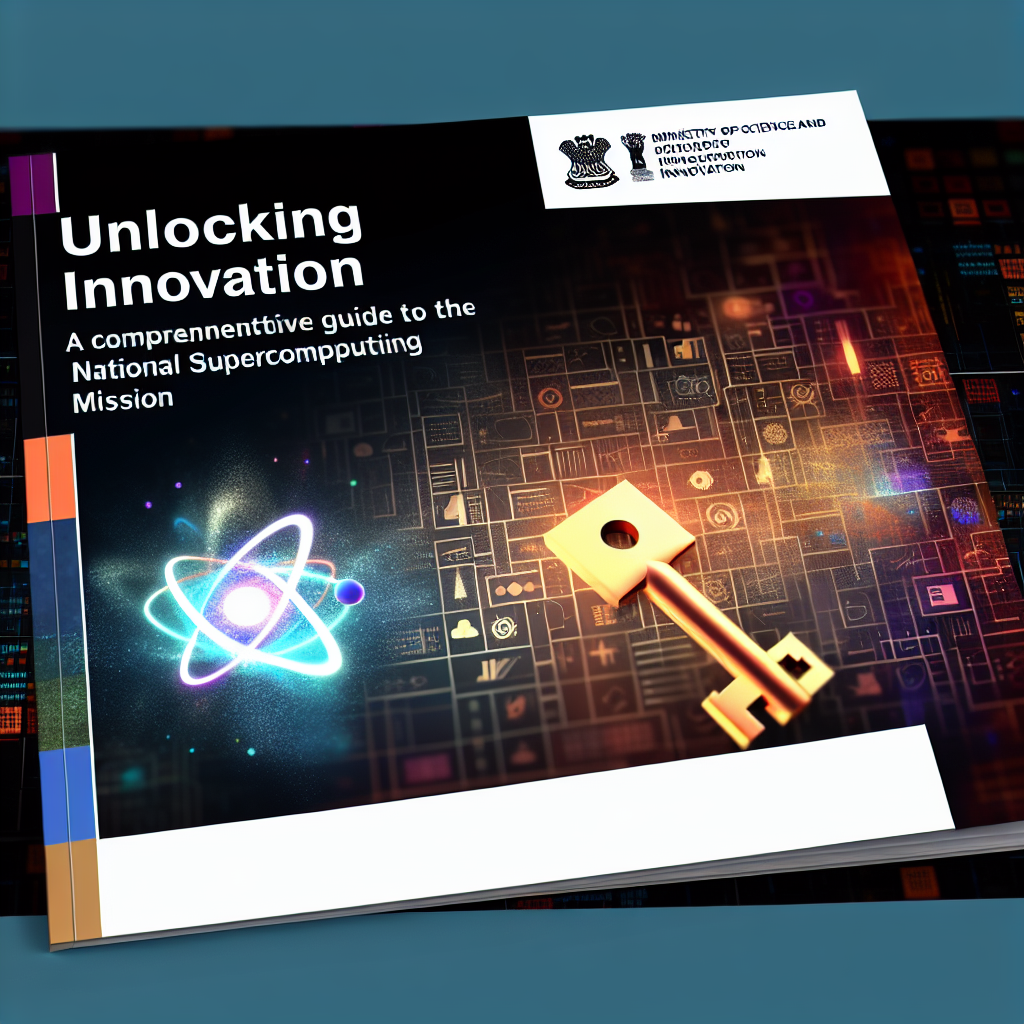Copyright @ 2023 www.digimitr.com. All rights reserved.

Unlocking Innovation: A Comprehensive Guide to the National Supercomputing Mission (NSM) by the Ministry of Science and Technology
Learn about the key aspects of the government scheme titled “Unlocking Innovation: A Comprehensive Guide to the National Supercomputing Mission (NSM) by the Ministry of Science and Technology”. This scheme is overseen by the relevant ministry and aims on providing benefits to eligible beneficiaries.
Here is a comprehensive overview:
The National Supercomputing Mission (NSM) is an initiative launched by the Ministry of Science and Technology of India dedicated to advancing computational research and mass data processing capabilities in the nation. As a significant step toward fostering innovation in sectors like healthcare, climate modeling, and complex simulations, NSM aims to create a robust supercomputing ecosystem that can meet the growing demands of academic and industrial sectors. The mission not only emphasizes upgrading the existing supercomputing infrastructure but also promotes collaborative research, skill development, and creating a wide range of applications that can be beneficial to society.
Eligibility Criteria
Eligibility to apply for the National Supercomputing Mission is designed to be inclusive yet focused on maximizing impact. The primary eligible entities include educational institutions, research organizations, and industry stakeholders engaged in computational and data-heavy research. To qualify, institutions must demonstrate a significant track record in computational science and have existing capabilities or projects that can benefit from supercomputing resources.
Additionally, collaborative proposals that involve partnerships, such as those between academia and industry, are highly encouraged. This aligns with the mission’s emphasis on creating a multidisciplinary approach to solving complex societal challenges using advanced computing resources.
Key Features and Benefits
The National Supercomputing Mission encompasses several key features designed to maximize its impact across various sectors. Firstly, it prioritizes the establishment of supercomputers across different institutions, enhancing their computational capabilities exponentially. This infrastructure aims to support diverse applications such as artificial intelligence, deep learning, and big data analytics, making cutting-edge research more accessible to local researchers and industries.
Another important feature is the collaborative research environment it fosters. By funding collaborative projects, NSM promotes innovation that leverages interdisciplinary approaches, allowing scientists and engineers from various fields to work together. This collaboration not only drives progress in technology but also encourages the transfer of knowledge and skills among researchers.
Furthermore, NSM emphasizes skill development by initiating training programs targeting students, researchers, and industry professionals. This focus on education prepares the workforce to effectively utilize supercomputing resources, thereby ensuring sustainability and growth of the supercomputing ecosystem in India.
Application Process
The application process for the National Supercomputing Mission involves several structured steps designed to ensure fairness and transparency. Interested institutions are required to submit a detailed project proposal specifying the research objectives, the expected impact of the project, and how it aligns with the mission’s goals.
Once submitted, proposals undergo a thorough review process evaluated by a panel of experts from various fields. Successful applications are then selected based on their scientific merit, feasibility, and potential to contribute to societal challenges. Institutions that receive funding will also have to provide periodic reports on the progress of their projects, ensuring accountability and alignment with the overall objectives of the NSM.
Funding and Budget
The funding for the National Supercomputing Mission is part of a broader strategy to enhance the research landscape in India. The mission has a substantial budget allocated for creating supercomputing facilities and supporting research projects across various domains. A significant portion of the funds is earmarked for establishing supercomputers at educational and research institutions spread across the country, ensuring nationwide access to advanced computing resources.
Funding is typically structured to support not only the acquisition of supercomputing infrastructure but also operational costs, training, and research activities related to the projects. The mission encourages self-sustainability by inviting institutions to co-fund initiatives, thereby fostering a sense of ownership and long-term interest in maintaining supercomputing capabilities.
Achievements or Impact
Since its inception, the National Supercomputing Mission has recorded significant achievements symbolizing progress in the domain of computational science in India. Several supercomputers have been successfully installed in leading research institutions, dramatically increasing their computational capabilities. This has led to breakthroughs in various fields such as climate studies, bioinformatics, and engineering sciences, which are pivotal for national development.
Moreover, by facilitating cross-border collaborations and regional partnerships, NSM has contributed to enhancing India’s position in the global scientific community. Publications and patents stemming from research utilizing NSM resources have witnessed a notable rise, indicating a thriving research environment fueled by supercomputing innovations.
Challenges (if any)
While the National Supercomputing Mission has made considerable headway, it has also faced a few challenges. One of the significant hurdles includes ensuring efficient utilization of resources across diverse projects. Given the demand for supercomputing capabilities, balancing access between various institutions can be complex, requiring careful management to optimize performance.
Moreover, ensuring that researchers across different sectors, especially in remote or underserved areas, can effectively leverage these advanced resources remains an ongoing challenge. Continuous efforts in outreach and education are necessary to bridge this gap and make supercomputing accessible to all who can benefit from it.
Recent Updates
In recent months, the NSM has continued to evolve, evidenced by the unveiling of new supercomputing facilities and expanded collaborations with industry leaders. Additionally, the mission has introduced several national-level competitions and hackathons aimed at engaging young innovators and researchers. These initiatives not only promote the use of supercomputing resources but also spark new ideas and solutions that can be translated into real-world applications.
Moreover, updates regarding policy changes aimed at streamlining the application and funding processes have been announced, reflecting the mission’s adaptive strategy to enhance support for researchers in a rapidly changing technological landscape.
Conclusion
The National Supercomputing Mission stands as a transformative effort in bolstering India’s scientific research capabilities through advanced computational resources. With its focus on collaborative research, skill development, and infrastructure enhancement, NSM serves as a beacon of innovation that aligns with the nation’s strategic vision for the future. By bridging the gap between academia and industry and fostering interdisciplinary work, NSM not only addresses pressing societal challenges but also prepares the country for the demands of the global research arena.
FAQ
1. Who can apply for funding under the National Supercomputing Mission?
Eligibility is primarily aimed at educational institutions, research organizations, and industry stakeholders focusing on computational and data-intensive research. Collaborations between these entities are encouraged to maximize impact.
2. What are the primary goals of the National Supercomputing Mission?
The primary goals include enhancing India’s supercomputing infrastructure, promoting interdisciplinary research, and developing a highly skilled workforce capable of driving innovation using advanced computing techniques.
3. How is the success of projects funded by NSM monitored?
Successful applicants are required to submit periodic reports detailing their project progress, outcomes, and impacts. This oversight ensures that resources are effectively utilized and align with the mission’s objectives.
For more information, check out official government site,
Official government website or relevant source not provided.
Stay updated on related schemes and initiatives using hashtags: #Unlocking #Innovation #Comprehensive #Guide #National #Supercomputing #Mission #NSM #Ministry #Science #Technology
Feel free to share about this scheme in the comments below!





